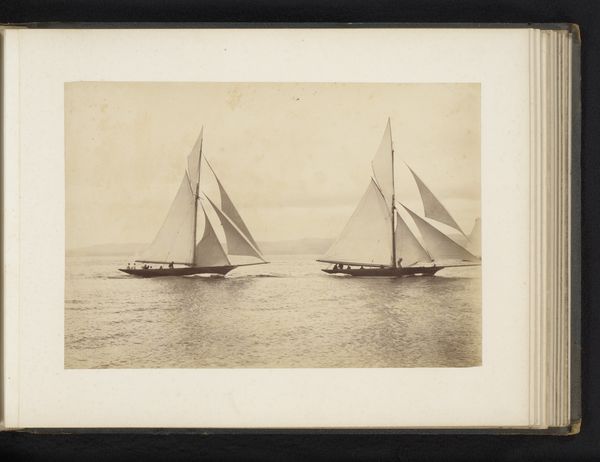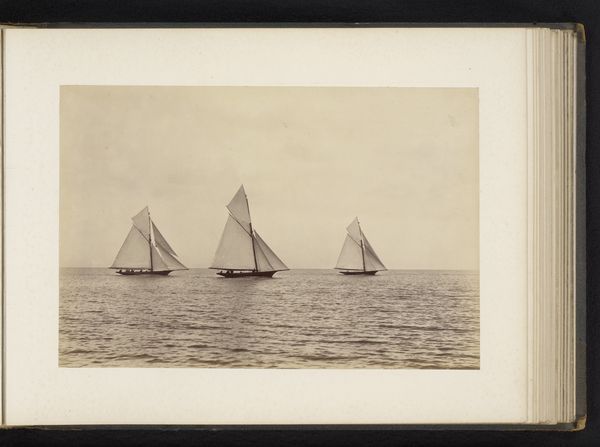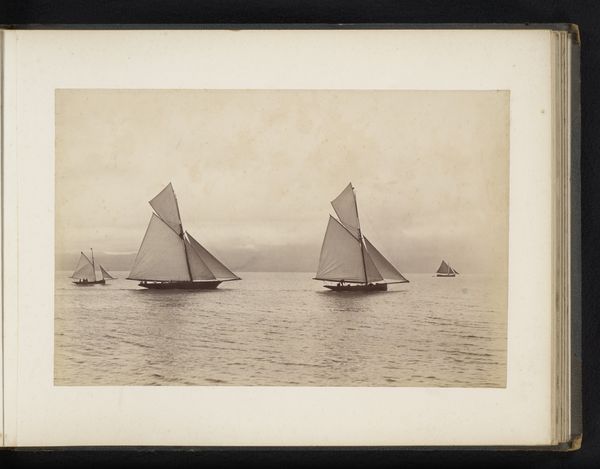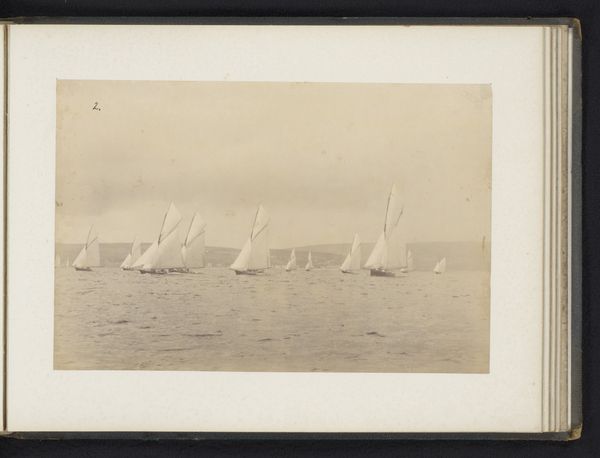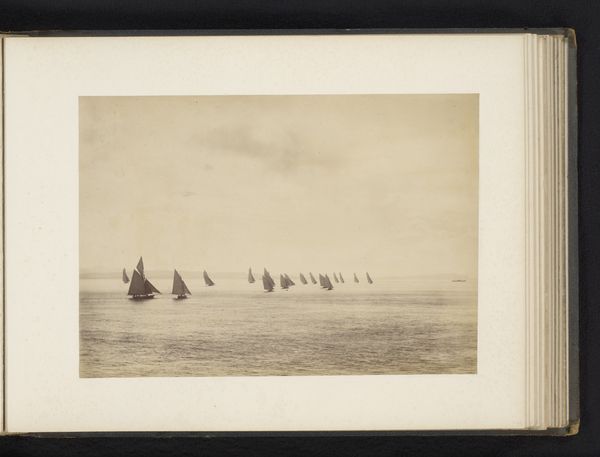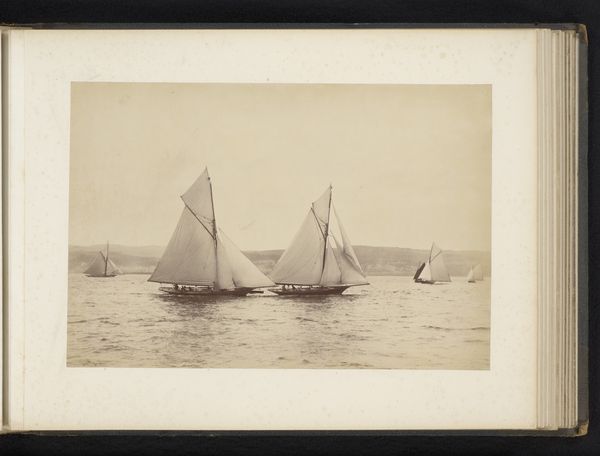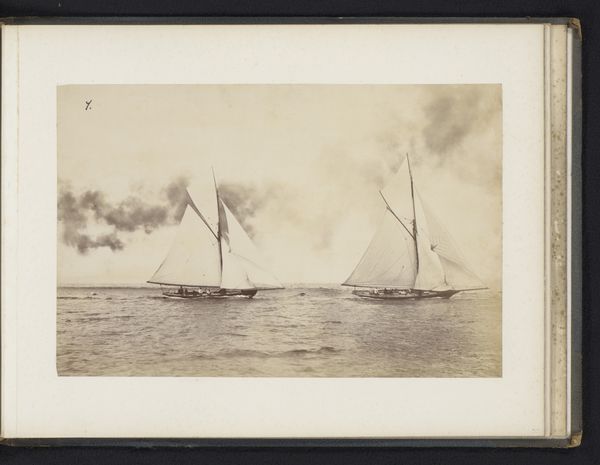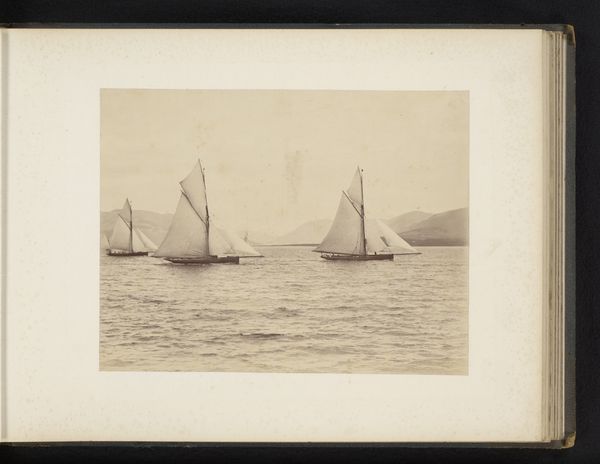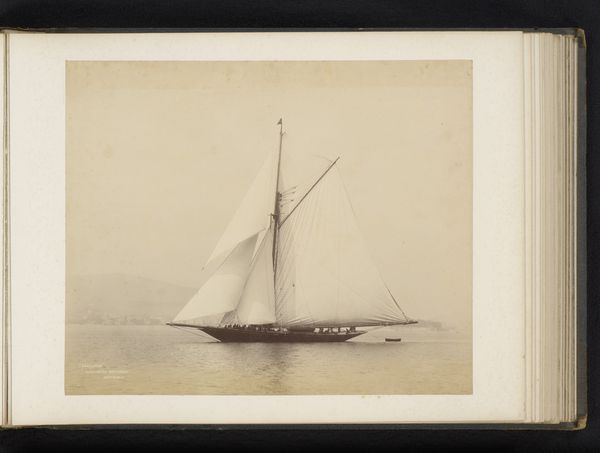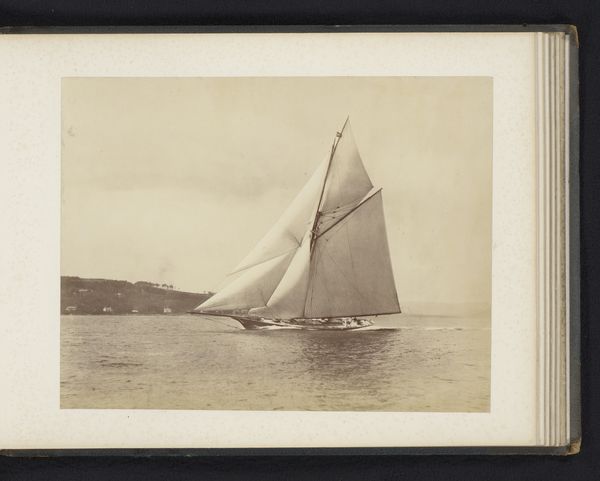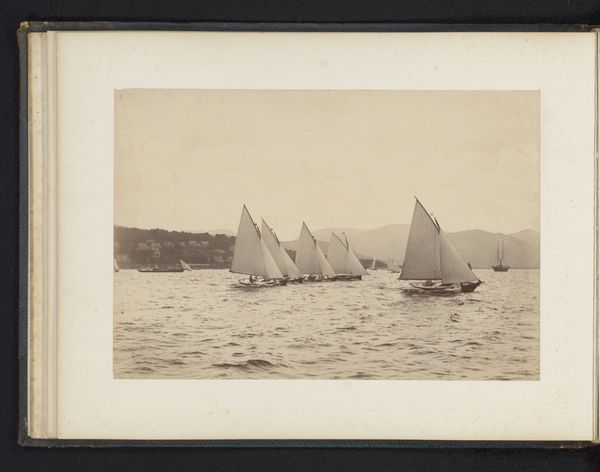
photography
#
still-life-photography
#
landscape
#
photography
Dimensions: height 210 mm, width 281 mm
Copyright: Rijks Museum: Open Domain
Editor: Here we have a photograph from around 1880 to 1900 by James Adamson, titled "Zeilschepen de Harlequin, Astore en Sally te water," which roughly translates to "Sailboats the Harlequin, Astore and Sally at sea". I find the composition calming, almost meditative. What strikes you about it? Curator: The calmness you mention speaks to the burgeoning leisure culture of the late 19th century. Photography played a vital role in shaping and reflecting these social shifts. Think about who could afford leisure activities like sailing, and who, therefore, had their lives visually represented through such imagery. Editor: So, the image isn't just a pretty picture of sailboats, but a representation of a certain class at play? Curator: Precisely. It speaks to the politics of representation – whose activities are deemed worthy of documentation and preservation? These weren't simply objective snapshots; they reflect societal values and power dynamics of the time. Were these ships racing, or simply sailing for pleasure? The answer shifts how we see them. Editor: I hadn't considered that angle. How photography itself contributes to shaping social perceptions. It’s easy to get lost in the aesthetic. Curator: That aesthetic itself is crucial. How does the photographic process – the tones, the composition – contribute to the overall message? Does it idealize this leisure, or present it realistically? Consider the absence of other social classes in this image of freedom. Editor: Thinking about it as more than just sailboats and open water shifts everything. Thanks, I’m definitely looking at this differently now! Curator: My pleasure. It’s these types of questions that transform our understanding and allow for meaningful art analysis.
Comments
No comments
Be the first to comment and join the conversation on the ultimate creative platform.
